
Philipp Schindler erhält ERC Starting Grant
Marco Canteri receives his Masters

Congratulations, Marco!
Thesis Titled: Single-atom-focused laser for photon generation and qubit control
New method prevents quantum computers from crashing

Quantum information is fragile, which is why quantum computers must be able to correct errors. But what if whole qubits are lost? Researchers at the University of Innsbruck, in collaboration with RWTH Aachen University and University of Bologna, are now presenting a method in the journal Nature that allows quantum computers to keep going even if they lose some qubits along the way.
Welcome Matthias Bock
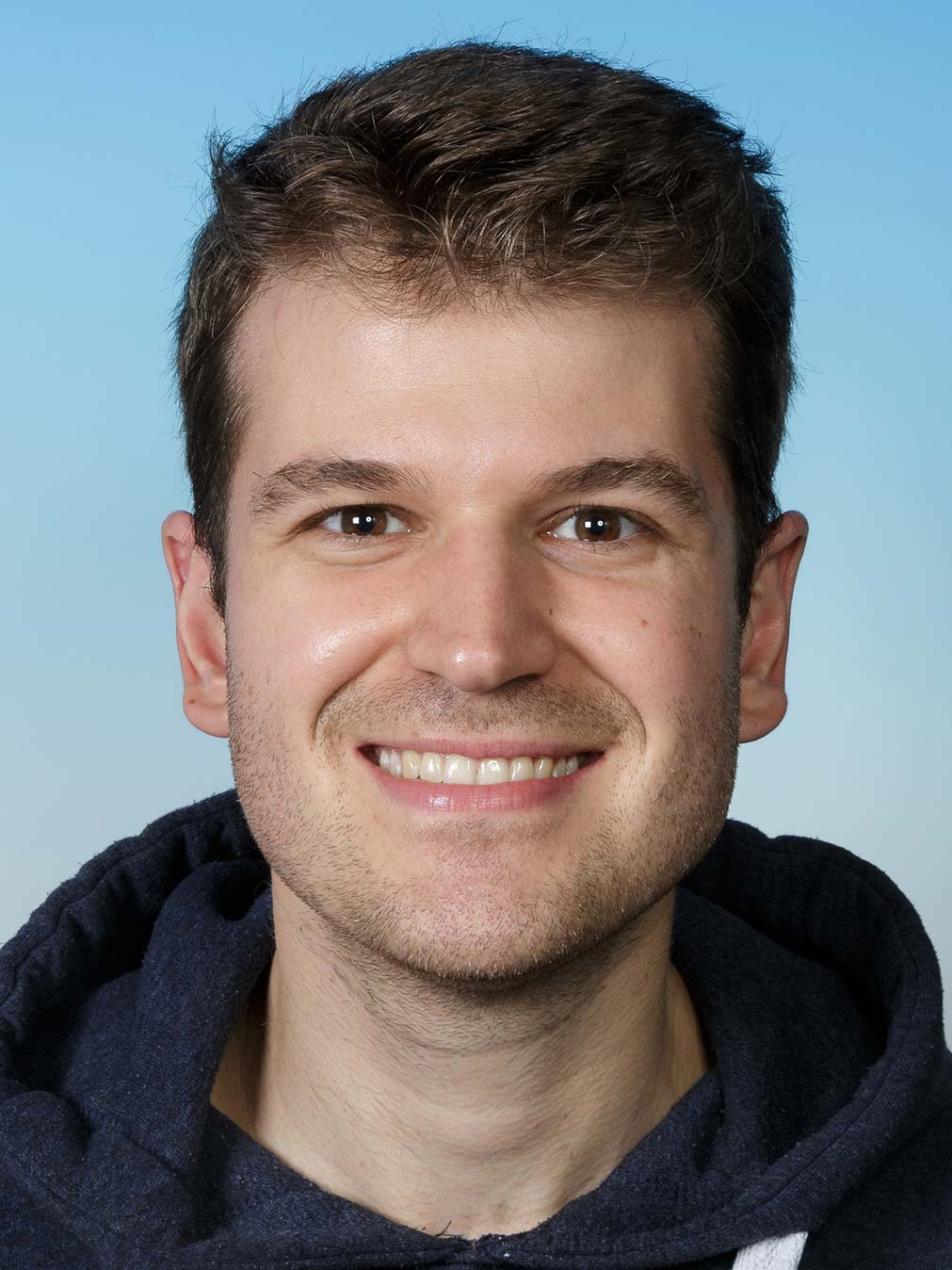
Matthias did his PhD at Saarland University in Saarbrücken, Germany, where he worked on polarization-preserving quantum frequency conversion as telecom interface for quantum networks based on single trapped ions and neutral atoms.
In Innsbruck, Matthias will join the 2D crystal team aiming at variational quantum simulation of spin models in two-dimensional geometries.
Welcome James Bate
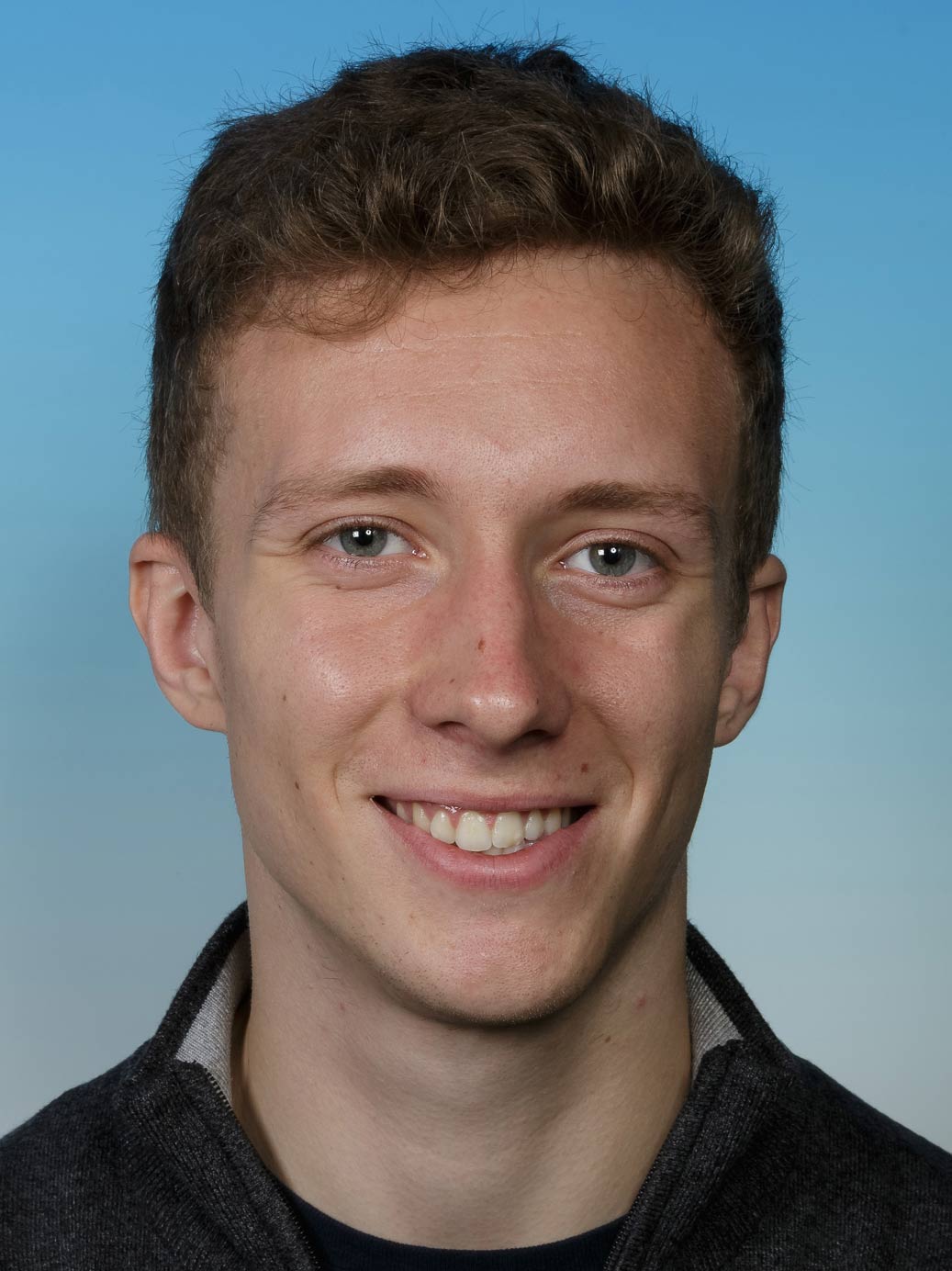
James did his MPhys at Oxford University where he was investigating the Fermi surface topology of quasi-2D iron-based superconductors.
He will be joining Ben Lanyon's group as a PhD student where he will be researching applications for quantum networks.
Welcome Matthias Dietl
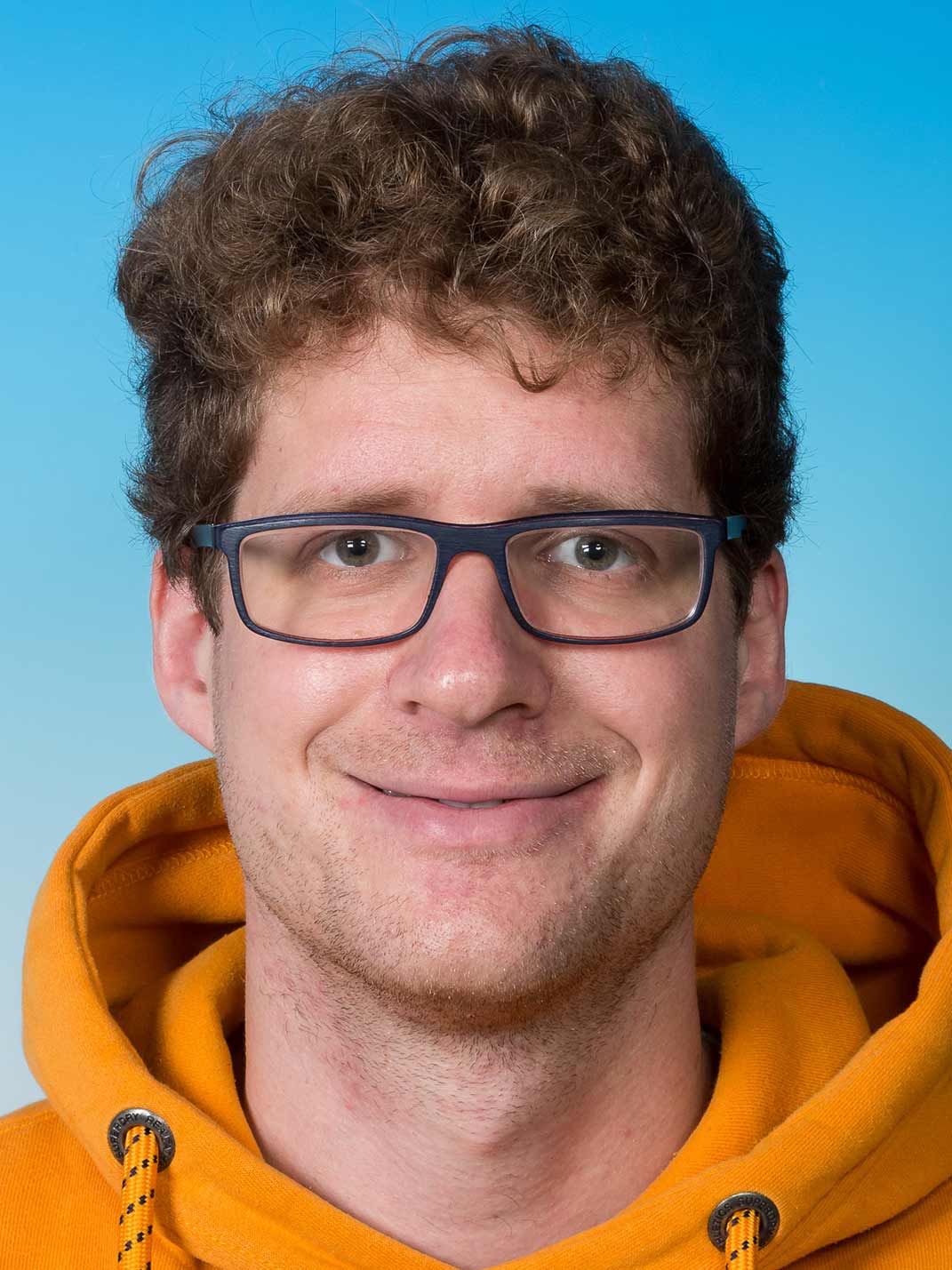
Matthias did his Masters in Regensburg in the group of Prof. Schüller, and is now joining the Cryo team as PhD student. He will work both in Innsbruck and in Villach with Infineon on the development of novel 2D surface traps.
Marc Bussjäger receives his Masters

Congratulations, Marc!
Thesis Titled: Automated Frequency Locking via Spectroscopy on trapped 40Ca+ Ions
Panopticon: a new ion trap for quantum optics
![]()
The new experiment will allow the scientists at the University of Innsbruck to explore new quantum electrodynamics effects by locating a single ion in front of a hemispherical mirror (Scilight article)
Error protected quantum bits entangled
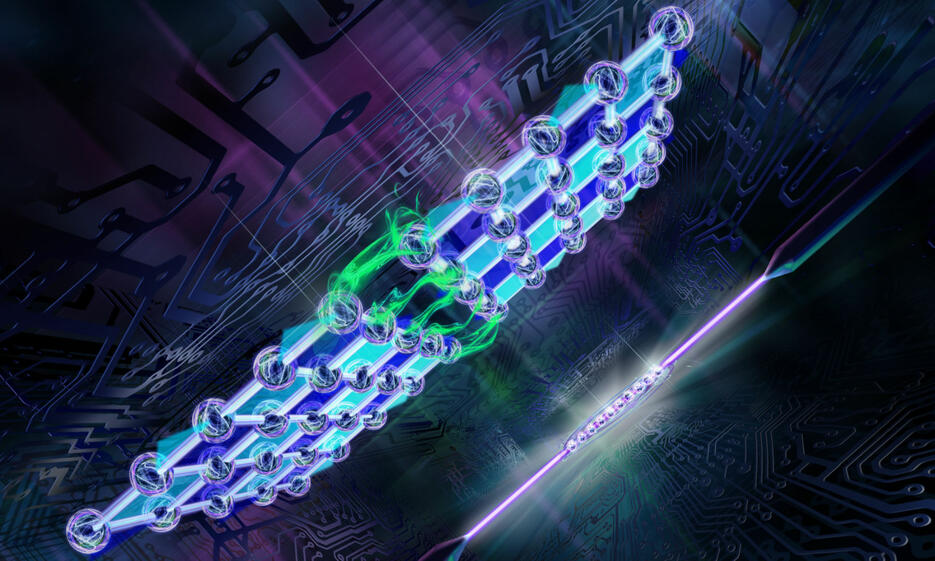
For the first time, physicists from the University of Innsbruck have entangled two quantum bits distributed over several quantum objects and successfully transmitted their quantum properties. This marks an important milestone in the development of fault-tolerant quantum computers. The researchers published their report in Nature.
Welcome Stefan Walser
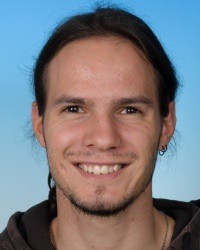
Stefan did his PhD at the TU Vienna in the group of Arno Rauschenbeutel. There he worked on a project showing theoretically end experimentally that the polarization state of light emitted by subwavelength emitters can give rise to a fundamental error in position measurements of the emitters. This work was published together with our former group members Gabriel, Daniel and Yves.
He is now joining the ERC project QCosmo from Philipp Schindler where he will apply quantum computing techniques to investigate polyatomic molecular ions.
Welcome Anders Lindberg
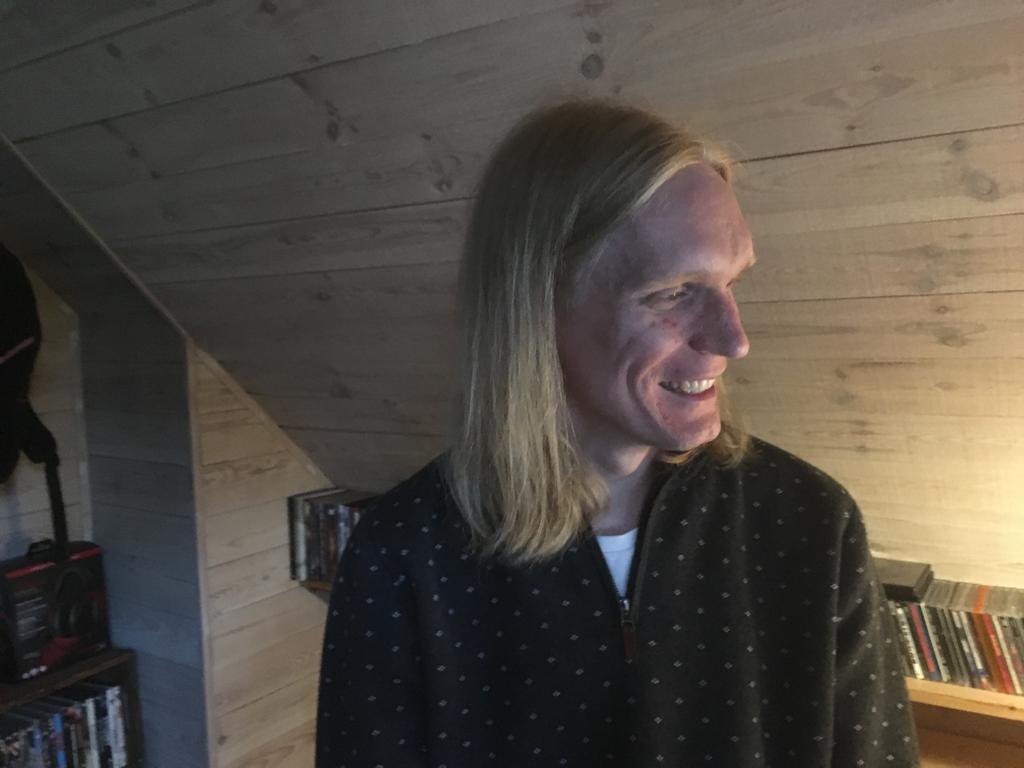
Anders did his master's degree at Stockholm University in the group of Markus Hennrich working on improving the coherence times of ions. In Innsbruck he will join the Quantum Information team on the LinTrap setup.
.
Welcome Armin Winkler
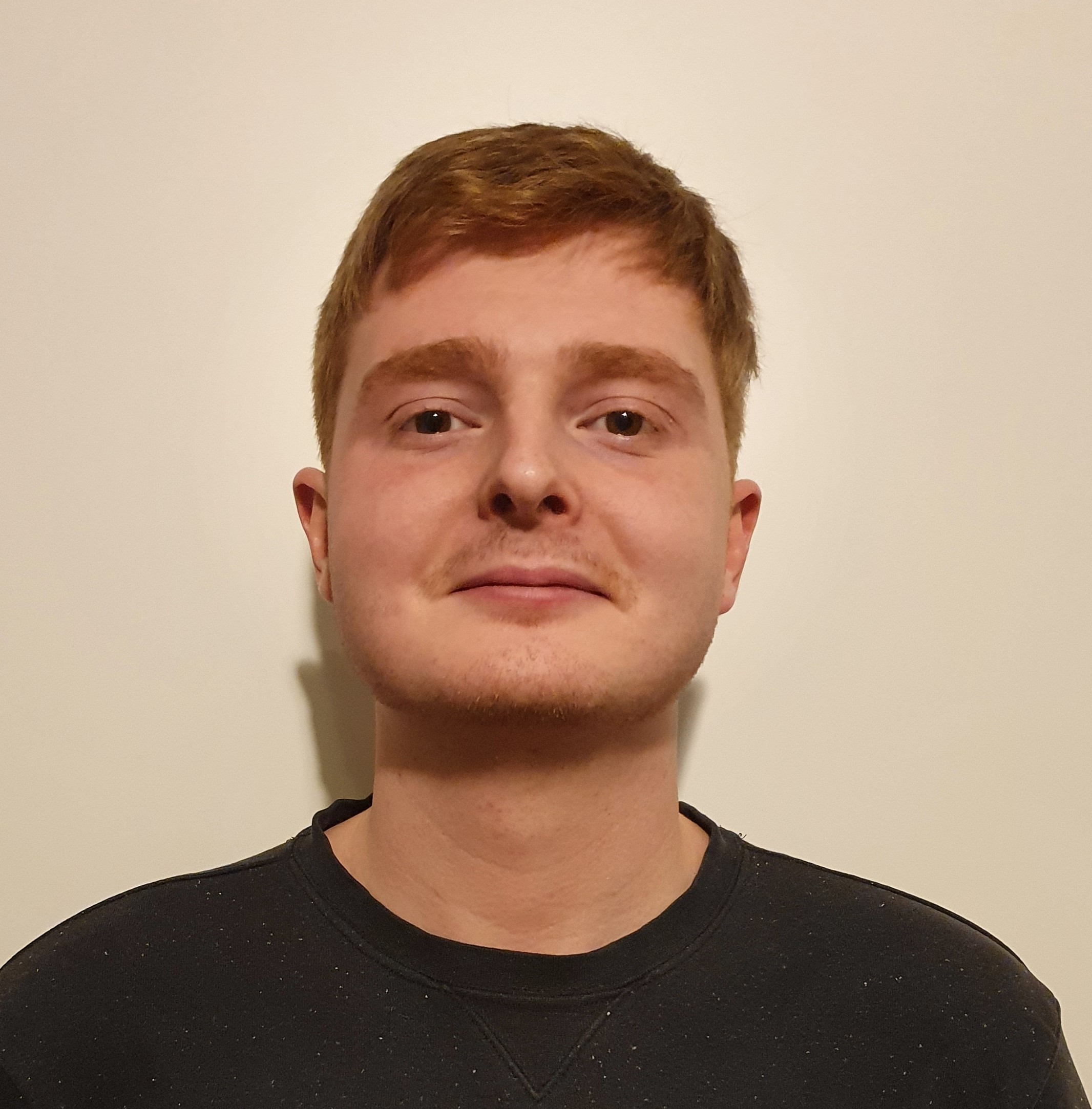
Armin joined the group for his Master project where he will set up a new 729nm laser system.
Welcome Simon Garbin
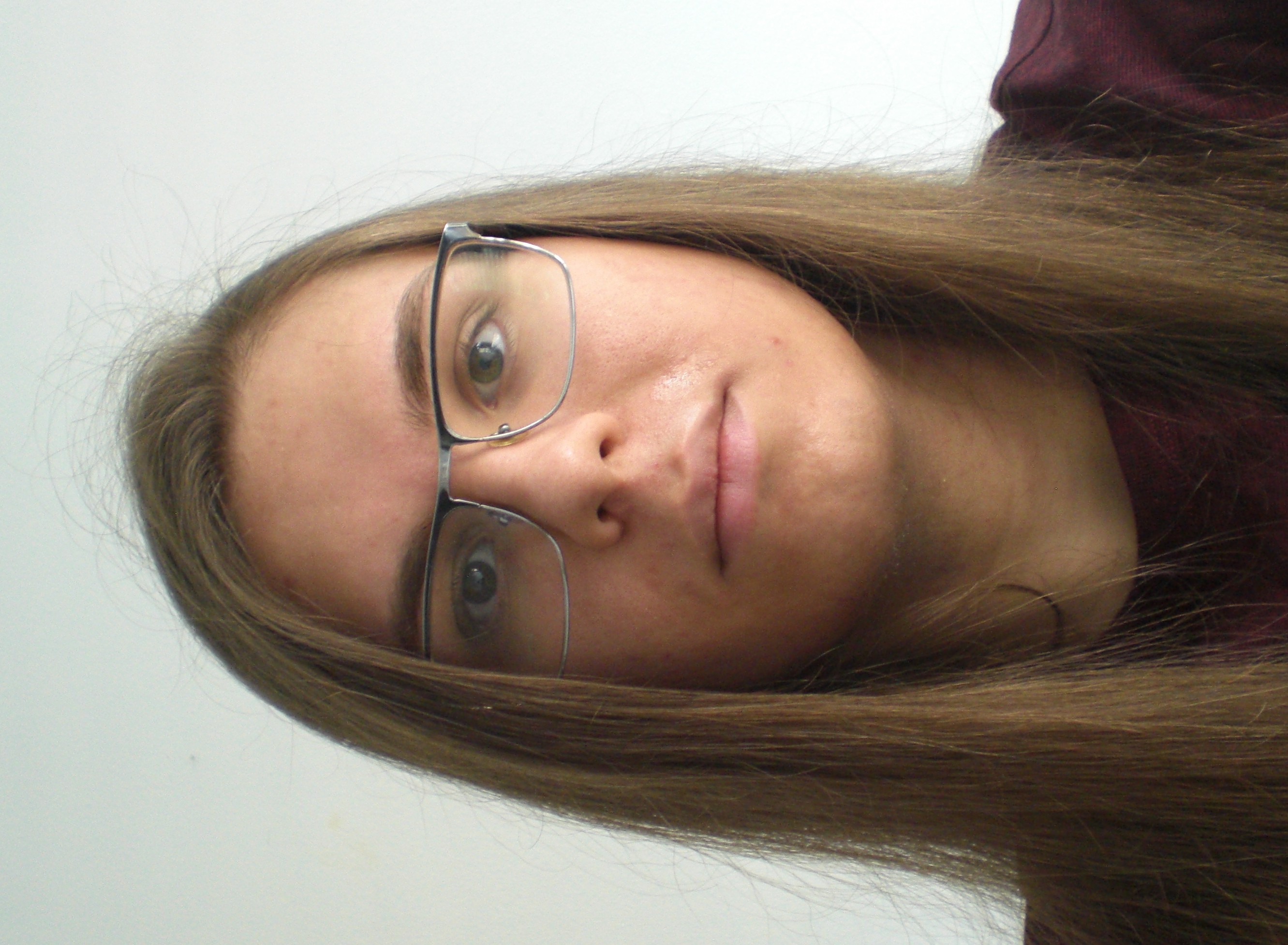
Simon joined the group for his Master project where he will work on phase-modulated entangling gates for the AQTION setup. These promise to make entangling gates more robust to errors associated to fluctuating laser frequency and amplitude.
Welcome Yannick Weiser

We welcome Yannick to the Barium experiment! He studied physics at Erlangen and worked during his Master's thesis on a Quantum Communication platform based on coherent CV-QKD. Here in Innsbruck, his Ph.D. project will focus on fundamental Quantum Optics to study the interaction between a trapped ion and the single photons emitted by the ion in the presence of a hemispherical mirror.
Christine Maier receives her PhD

Congratulations, Christine!
Thesis Title: A quantum simulator with long strings of trapped ions
Welcome Claire Edmunds
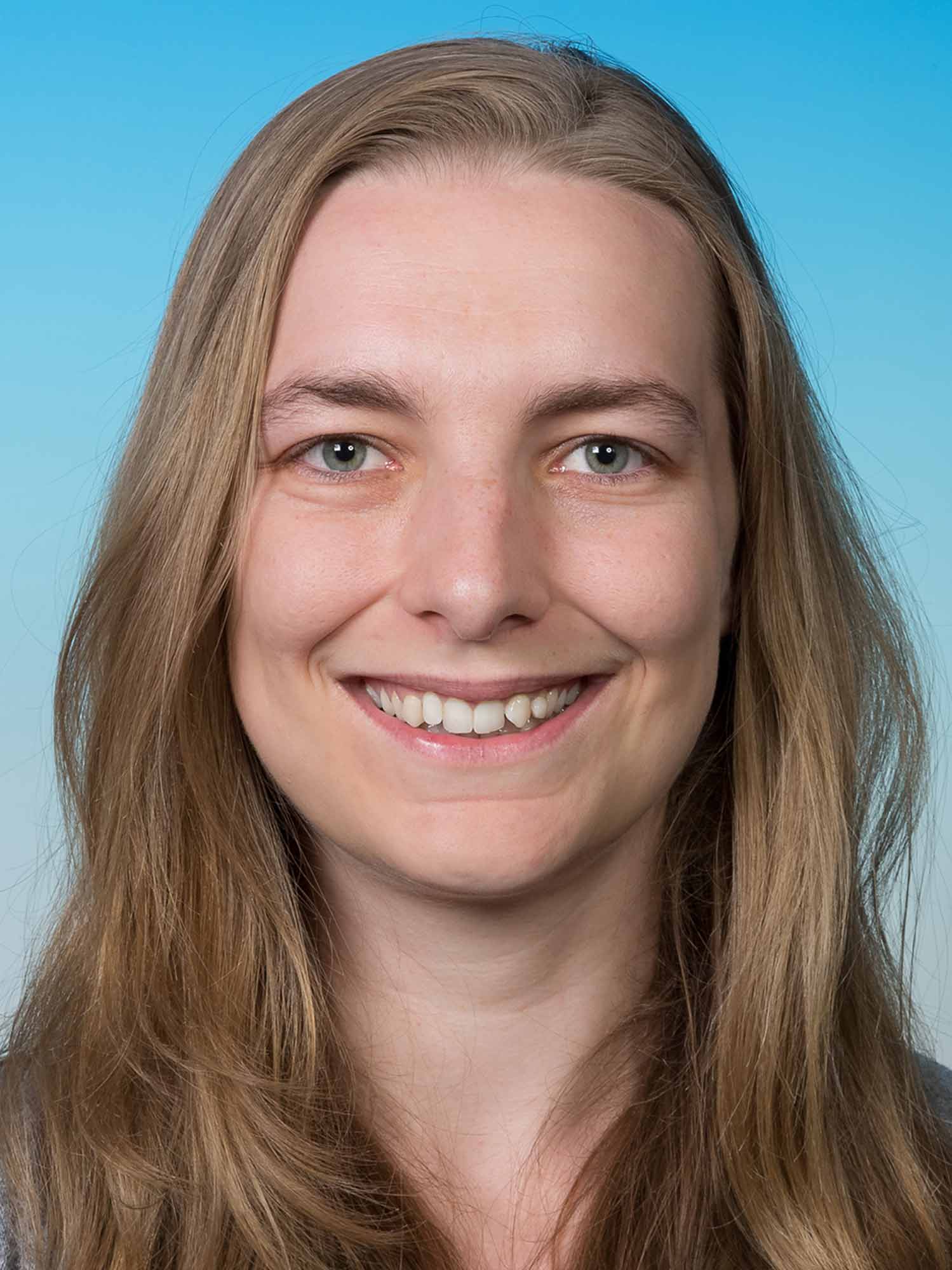
Welcome Claire! Claire Edmunds completed her Ph.D. at the University of Sydney in Australia working on characterising and reducing errors in trapped ion quantum devices. Claire has received an ESQ fellowship from the Austrian Academy of Sciences to work here at the University of Innsbruck, where she will integrate these techniques into the Linear Trap quantum simulation and information experiments.
Interface between Trapped-Ion Qubits and Traveling Photons
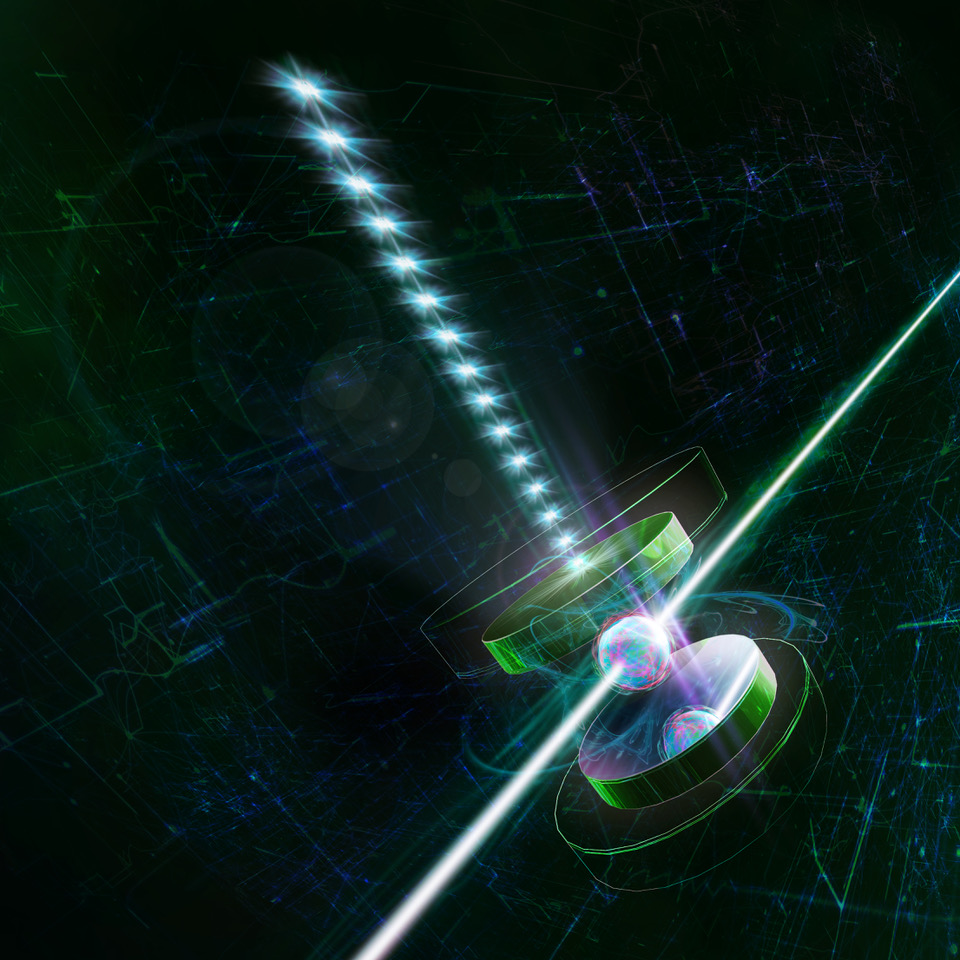
A quantum version of the internet, built of interacting quantum light and matter, would enable powerful new capabilities for science and technology. A key requirement for the quantum internet is the ability to efficiently collect photons that are emitted by and entangled with quantum matter. In our paper (link) published in PRX Quantum, we report on a significant increase in the efficiency of entangled photon collection from a leading example of quantum matter: a single trapped atomic ion. The achieved performance opens up new near-term methods for engineering and studying many-particle quantum states.
Compact quantum computers for server centers
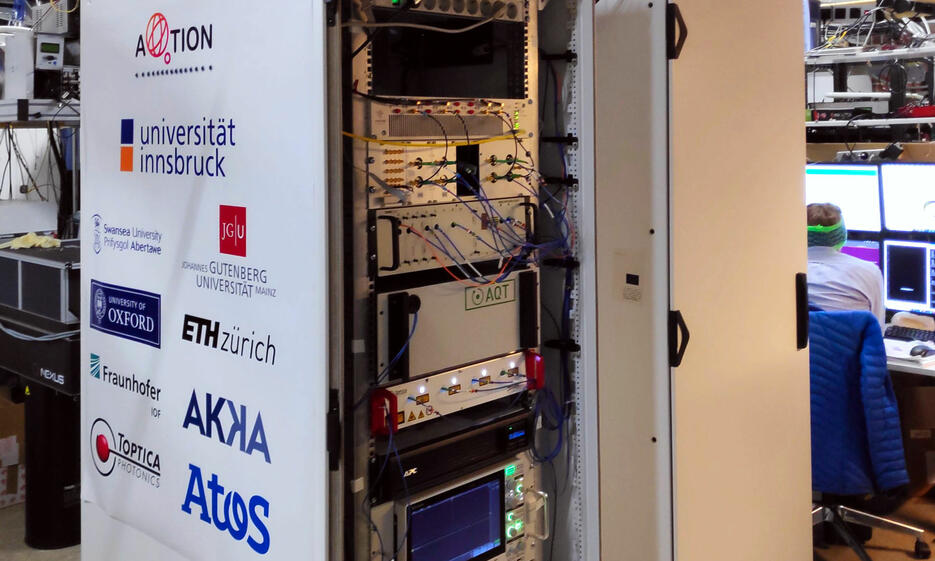
So far, quantum computers have been one-of-a-kind devices that fill entire laboratories. Now, physicists at the University of Innsbruck have built a prototype of an ion trap quantum computer that can be used in industry. It fits into two 19-inch server racks like those found in data centers throughout the world.
Ion's motion observed via fluorescence light detection
The observation of trapped ions' motion is a cutting-edge method for stringent tests of quantum mechanics and precision measurements of the rest energies of fundamental particles. We have developed a new method based on fluorescence detection to measure this motion. We reveal all the oscillations' frequencies of a trapped ion chain simultaneously by only using the Doppler cooling radiation and the help of a mirror that reflects the ions' fluorescence back on the ions.

